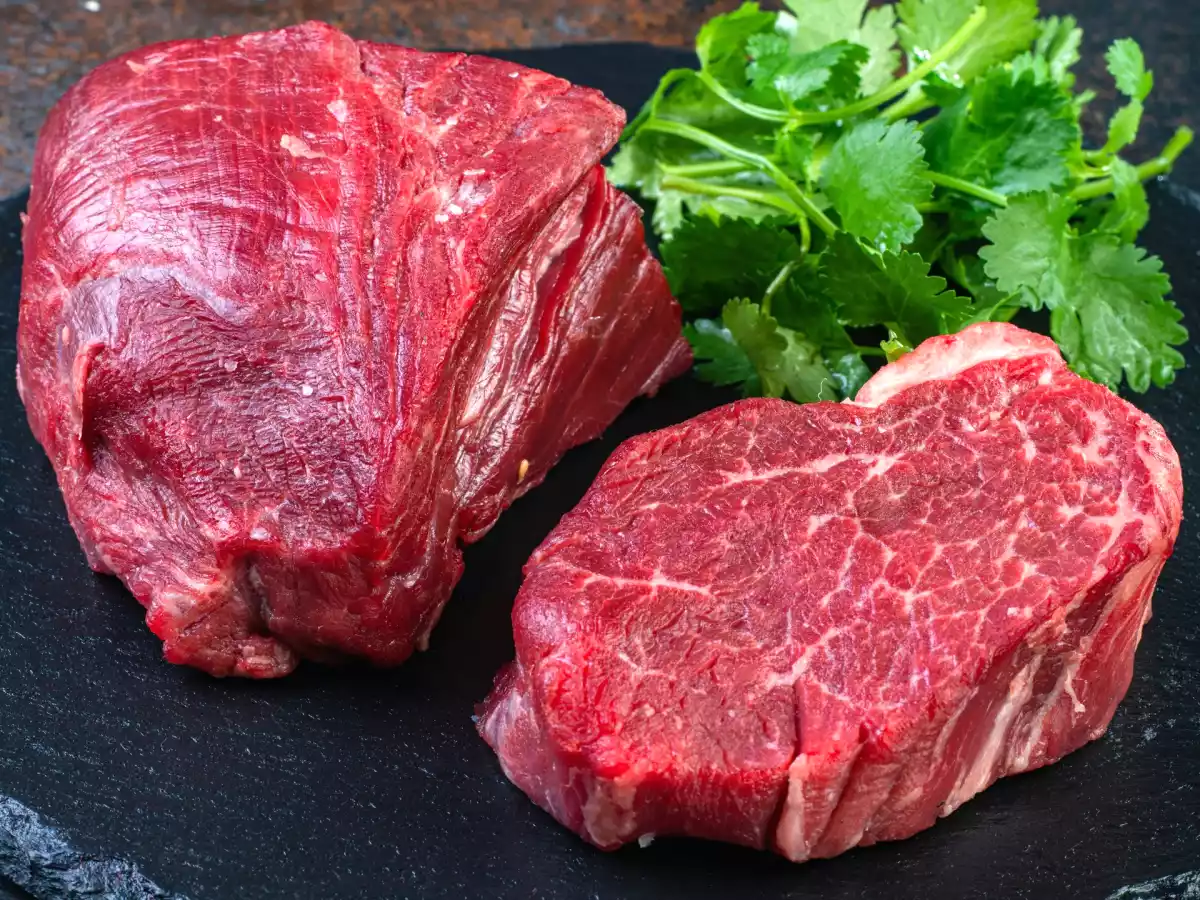Unmistakable signs: is your meat still good? Find out how to avoid food poisoning

Meat is a food that is very susceptible to bacteria. If not stored properly, it can spoil quickly and become a health hazard. Learning to spot the signs of spoiled meat is crucial to preventing food poisoning. In this article we will see how to recognize spoiled meat through visual, olfactory and tactile observation.
Visual observation
One of the first visible signs of meat spoilage is the change in color, which varies depending on the type of meat and the stage of decomposition. Fresh meat generally shows bright, defined colors.
- Red Meat: Fresh red meat exhibits a bright, typically bright red coloration. A gradual darkening to brown or gray may indicate an oxidation process. Although slight darkening does not necessarily compromise quality, excessively dark coloration is a sign of potential spoilage.
- White Meat (chicken, turkey): Pay attention to the color of chicken and turkey. If instead of a nice bright pink, the meat appears grayish, yellowish or has greenish spots, it is a clear sign of spoilage. Consuming spoiled meat can cause serious health problems, so don't risk it!
- Pork: Pork, with its characteristic pink color, should maintain this uniform appearance. The presence of grayish or greenish areas is a clear indicator of spoilage and should be avoided.
Tactile observation
In addition to color, pay attention to texture: fresh meat should be firm and firm to the touch. Avoid meat that is mushy, gelatinous or has slimy parts, as these are obvious signs of spoilage.
- Fresh Meat: It should be slightly moist to the touch, but without being viscous or sticky. This characteristic indicates that the meat has been stored properly and has not lost its natural juices.
- Spoiled Meat:The viscosity and slipperiness of meat are unmistakable signs that a decomposition process is taking place. Bacterial growth, which occurs under these conditions, can produce toxins that are harmful to health. Consuming meat in this state can cause food poisoning with symptoms such as nausea, vomiting, diarrhea and abdominal cramps.
Olfactory observation
Another key indicator is odor. Fresh meat has a very faint, almost imperceptible odor. If you notice a strong, unpleasant odor, it is best not to consume it. The most common odors that indicate spoiled meat are:
- Ammonia odor: If the meat gives off a chemical odor similar to ammonia, it means that it is definitely spoiled. This happens because during the decomposition process, meat proteins decompose, producing nitrogen compounds with a characteristic odor.
- Acid or Sulfur Odor: A pungent, almost nauseating odor reminiscent of acid or rotten eggs is also an unmistakable sign of meat deterioration.
- Sweet Smell: A sweetish odor is an unmistakable sign of spoilage, especially common in chicken because of its protein- and water-rich composition, which makes it a breeding ground for bacterial growth. When bacteria begin to proliferate, they produce volatile compounds that cause this typical sweet odor, similar to fermented meat.
You might also be interested in:
 Daniele Mainieri
Daniele Mainieri

Comments